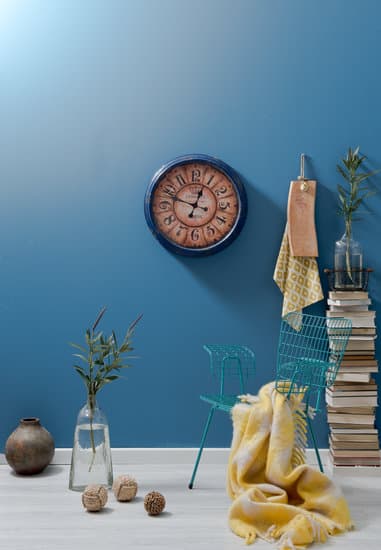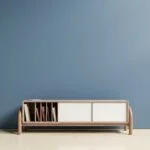Buddhist home decor captures the essence of serenity and tranquility, creating a harmonious living space inspired by Buddhist principles. By incorporating specific elements and utilizing mindful arrangements, one can transform their home into a sanctuary that promotes relaxation and mindfulness.
This article delves into the symbolism of key elements in Buddhist home decor, explores the significance of color and natural materials, provides tips on creating tranquil areas within the home, discusses the principles of Feng Shui, offers ideas for blending Buddhist elements with contemporary design styles, presents DIY craft projects, and shares sources for authentic and ethical pieces.
Through these insights, readers can embark on a journey to craft their own Buddhist sanctuary at home and embrace a sense of serenity and mindfulness in their daily lives.
Unveiling Symbolism
Delving into the Symbolism of Incense
Incense plays a significant role in Buddhist home decor, and its symbolism goes beyond creating a pleasant fragrance. In Buddhist culture, incense is considered a bridge between the human realm and the spiritual world.
It is believed that the aroma of incense can purify negative energy, calm the mind, and create a serene atmosphere conducive to meditation and mindfulness. When choosing incense for your home, opt for natural fragrances like sandalwood or jasmine, as these scents are commonly associated with peace and tranquility.
Embracing Buddha Statues
Buddha statues are perhaps one of the most recognizable elements in Buddhist home decor. These statues serve as reminders of Buddha’s teachings and symbolize enlightenment, compassion, and inner peace.
It is important to place Buddha statues in areas of respect within your home such as an altar or dedicated meditation space. When selecting a Buddha statue for your home, consider the material it is made from – bronze or stone are commonly used materials that convey a sense of grounding and stability.
The Meaning Behind Prayer Flags
Prayer flags are another essential element in Buddhist home decor that holds deep symbolism. These colorful rectangular flags typically bear prayers or mantras that are believed to bring positive energy when hung both indoors and outdoors.
Each color on the prayer flag holds significance: blue represents sky/space, white signifies air/wind, red symbolizes fire, green symbolizes water, and yellow represents earth. Hanging prayer flags not only adds vibrant colors to your space but also serves as a constant reminder to cultivate positive thoughts and share goodwill with all beings.
By incorporating these key elements into your Buddhist home decor, you can enhance the overall positive energy and create an environment that promotes serenity and mindfulness. Whether through using incense to purify negative energy, placing Buddha statues in areas of reverence, or hanging prayer flags to foster positive intentions, each element holds its own unique symbolism and contributes to the overall tranquility of your living space.
Zen in Colors
When it comes to Buddhist home decor, choosing the right color palette is crucial for creating a serene and harmonious atmosphere. Colors have a significant impact on our mood and emotions, and in Buddhist culture, specific colors hold symbolic meaning. By selecting colors mindfully, you can create a space that promotes relaxation, mindfulness, and balance.
Incorporating the right colors in Buddhist-inspired home decor can bring about a sense of tranquility and peace. Here are some practical tips for choosing the right palette:
- Earthy Tones: Earthy tones like beige, brown, and taupe are commonly used in Buddhist home decor as they represent grounding and stability. These neutral colors provide a calming backdrop for the overall design scheme.
- Serene Blues: Shades of blue are associated with calmness and serenity in Buddhism. Light blues reminiscent of clear skies or tranquil waters can evoke feelings of peace and tranquility.
- Soothing Greens: Green is often linked to nature and growth in Buddhist philosophy. Incorporating shades of green into your home decor can create a refreshing and rejuvenating ambiance.
- Subtle Pinks: Pink signifies love, compassion, and kindness in Buddhism. Soft shades of pink can add warmth to the space while encouraging feelings of tenderness and empathy.
- Balanced Neutrals: Integrating neutral shades like white or off-white can help maintain balance within Buddhist home decor. These colors symbolize purity, simplicity, and clarity.
Remember that personal preference should also play a role in selecting your color palette. It’s essential to choose hues that resonate with you personally while still aligning with the principles of Buddhist home decor.
Harmonizing with Nature
Incorporating natural materials is a key aspect of Buddhist home decor. By using elements such as bamboo, wood, and stone, you can create a connection with nature and foster a sense of calmness in your living space.
One of the primary benefits of using natural materials in Buddhist home decor is their ability to bring a grounding energy to the environment. Bamboo, for example, is considered a symbol of resilience and flexibility in Buddhist culture. Incorporating bamboo furniture or flooring can add an earthy touch to your home while also promoting a sense of stability and adaptability.
Wood is another essential material in Buddhist-inspired interior design. It represents growth and vitality, reflecting the cycles of nature. Furniture made from solid wood not only adds warmth and elegance to your space but also contributes to creating a harmonious atmosphere that aligns with the principles of Buddhism.
When it comes to incorporating stone into your home decor, consider using it as decorative elements or accents. Stone statues, pebbles, or even natural stone tiles can add texture and visual interest while evoking a sense of permanence and stability. Additionally, stones are believed to have grounding properties that can help instill a feeling of serenity in your home.
To incorporate natural materials effectively in your Buddhist home decor, consider using them as statement pieces or focal points. For example, you could opt for bamboo blinds or screens to divide spaces while showcasing the beauty of this material. Similarly, wooden shelves or cabinets can serve both functional purposes and add aesthetic appeal.
By embracing natural materials in your Buddhist home decor, you can create a living space that fosters tranquility, connection with nature, and inner peace. Whether through the use of bamboo furniture, wooden accents, or stone decorations-each element brings its unique energy while harmonizing with the principles of Buddhism.
Serene Spaces
Creating a serene and tranquil space in your home is essential for embracing the principles of Buddhist home decor. These dedicated areas serve as peaceful retreats where you can find solace, practice meditation, and cultivate inner peace. By carefully designing these spaces, you can create a sanctuary that embodies the essence of Buddhist practice.
Setting Up Meditation Corners
One way to incorporate a tranquil area in your home is by setting up a meditation corner. Choose a quiet location away from distractions, such as a spare room or a cozy corner in your living room or bedroom.
Start by finding a comfortable cushion or mat to sit on during your meditation sessions. You may also want to include a small table or altar where you can place items of personal significance, such as a Buddha statue or an incense burner.
Establishing Altars
Another option for creating tranquil spaces in your home is by establishing altars. This allows you to create a designated area for spiritual practices and reflection. Choose a flat surface, such as a shelf or a console table, to serve as your altar.
Decorate it with meaningful objects like prayer beads, candles, flowers, and images that inspire you personally. As you arrange these items on your altar, consider their symbolism and how they contribute to the sense of tranquility you’re trying to achieve.
Furniture Arrangement and Lighting Tips
When arranging furniture in these tranquil areas, prioritize simplicity and functionality. Opt for minimalistic designs that promote ease of movement and avoid cluttering the space with excessive furnishings. Position seating options like cushions or chairs near windows if possible so that natural light can flow into the area, creating an uplifting atmosphere.
In terms of lighting, aim for soft and ambient illumination rather than harsh overhead lights. Consider using floor lamps with warm-toned bulbs or string lights to create a cozy and calming ambiance.
By implementing these ideas and suggestions, you can create serene spaces in your home that resonate with the principles of Buddhist home decor. These designated areas will serve as reminders to practice mindfulness and find peace amidst the chaos of daily life.
Mindful Arrangements
In Buddhist home decor, creating a balanced and harmonious environment is essential to embrace the principles of mindfulness and serenity. One effective way to achieve this is through the practice of Feng Shui, an ancient Chinese art that focuses on optimizing the flow of positive energy, or chi, within a space. By incorporating elements of Feng Shui into your Buddhist-inspired home decor, you can further enhance the tranquility and positivity in your living space.
One important aspect of Feng Shui in Buddhist home decor is furniture placement. According to Feng Shui principles, furniture should be arranged in a way that allows for easy movement and a natural flow of energy. Consider placing your furniture in a way that creates open spaces and avoids cluttered areas. Additionally, avoid placing large pieces of furniture in front of doorways or windows, as this obstructs the flow of chi.
Decluttering is another crucial element of Feng Shui in Buddhist home decor. Removing unnecessary items from your living space not only creates a clean and organized environment but also allows positive energy to flow freely. Take time to assess each item in your home and discard or donate things that no longer serve a purpose or bring joy.
Natural light plays a significant role in both Buddhism and Feng Shui. Incorporate natural light into your home by keeping your curtains or blinds open during the day to allow sunlight to fill your space. If natural light is limited, consider using full-spectrum light bulbs that mimic daylight.
Overall, integrating Feng Shui principles into your Buddhist home decor promotes balance, harmony, and positive energy flow throughout your living space. By mindfully arranging furniture, decluttering, and utilizing natural light sources effectively, you can create an environment that supports tranquility and mindfulness in line with Buddhist teachings.
| Feng Shui | Buddhist Home Decor |
|---|---|
| Optimizing the flow of positive energy | Creating a peaceful and harmonious living space |
| Furniture placement for easy movement and natural energy flow | Arranging furniture in open spaces to avoid clutter and obstruction |
| Decluttering to allow free flow of positive energy | Removing unnecessary items to create a clean and organized environment |
| Incorporating natural light to promote harmony | Utilizing natural light sources effectively for a serene atmosphere |
Balancing Modernity with Tradition
With the growing trend of contemporary interior design styles, there is a desire to blend modernity with tradition. This section will explore how to seamlessly incorporate Buddhist elements into contemporary interiors, creating a harmonious and balanced living space.
When integrating Buddhist home decor into contemporary interiors, it is important to maintain a minimalist approach. The goal is to highlight specific Buddhist-inspired elements without overwhelming the space. One way to achieve this is through minimalist Buddha artwork. A simple and elegant Buddha sculpture or painting can serve as a focal point in a room, adding a touch of spirituality and tranquility.
Another way to incorporate Buddhist elements in contemporary interiors is through meditation-inspired furniture pieces. For example, floor cushions or low seating arrangements can create a Zen-like atmosphere and provide comfortable spaces for meditation or relaxation. These pieces not only add functionality but also serve as reminders of mindfulness and peace.
Lighting plays a crucial role in creating the desired ambience in any interior space. When incorporating Buddhist elements, it is recommended to utilize natural light as much as possible. Large windows or skylights can help bring in an abundance of natural light, creating an open and airy feel. Additionally, soft ambient lighting can be achieved through the use of paper lanterns or dimmer switches on ceiling fixtures.
To visually balance modernity with tradition, it is essential to choose materials that reflect both aesthetics. Combining natural materials like wood or bamboo with sleek metallic finishes can create an interesting contrast while still maintaining harmony within the space.
Overall, the key to successfully blending Buddhist home decor with contemporary interiors lies in finding a delicate balance between traditional elements and modern design principles. By implementing these tips, individuals can create living spaces that inspire mindfulness and serenity while embracing their personal style preferences.
| Key Tips | Examples |
|---|---|
| Maintain a minimalist approach | Simple Buddha artwork as a focal point |
| Utilize meditation-inspired furniture pieces | Floor cushions or low seating arrangements |
| Incorporate natural light and soft ambient lighting | Large windows, skylights, paper lanterns |
| Combine natural materials with sleek finishes | Wood or bamboo with metallic accents |
DIY Crafts
Creating a serene and tranquil living space inspired by Buddhist principles doesn’t have to be limited to purchasing ready-made decor items. In fact, incorporating DIY crafts into your Buddhist home decor can add a personal touch and allow you to fully express your creativity. Here are some handcrafted Buddhist home decor ideas that you can easily try out.
One idea is to create your own Zen garden. Zen gardens, also known as rock gardens, are miniature landscapes that represent nature in its simplest form. To make a Zen garden, start by finding a shallow tray or dish and filling it with sand or gravel. Then, arrange rocks, small plants, and even miniature Buddha statues to create a peaceful scene. Raking patterns in the sand can also be a meditative practice that promotes relaxation and mindfulness.
Another DIY project is making lotus flower wall hangings. The lotus flower holds significant symbolism in Buddhism as it represents purity and enlightenment. You can create a lotus flower wall hanging using simple materials like colored cardstock or fabric, scissors, glue, and string.
Cut out several petal shapes in different sizes from the cardstock or fabric, then layer and glue them together to form a blooming lotus flower. Attach string or ribbon to the back of the flower so that you can hang it on your wall.
If you enjoy creating artwork, consider making mantra-inspired pieces to incorporate into your Buddhist home decor. Mantras are sacred sounds or words believed to have spiritual power when chanted or written down. Choose a mantra that resonates with you and write it on canvases using calligraphy techniques or paintbrushes. You can also experiment with different colors and textures to enhance the visual impact of the artwork.
By engaging in these DIY crafts for Buddhist home decor, not only will you infuse your living space with elements of serenity and mindfulness but also add a personal touch that reflects your own journey on the path of Buddhism. These handcrafted items will become reminders of your commitment to creating a harmonious and peaceful sanctuary at home.
Sources for Buddhist Home Decor
The popularity of Buddhist home decor has increased in recent years as more people seek to create a peaceful and harmonious living space inspired by Buddhist principles. However, finding authentic and ethical pieces can be a challenge. In this section, we will explore some trusted sources for purchasing genuine Buddhist-inspired home decor items while also highlighting the importance of supporting fair trade practices and sustainable production.
One option for finding authentic Buddhist home decor is to visit local Buddhist temples or meditation centers. Many of these places sell traditional items such as incense, prayer beads, and statues that have been sourced from reputable artisans and craftsmen. By purchasing directly from these sacred places, you can ensure that your money goes towards supporting the local community and the upkeep of the temple.
Another way to find authentic pieces is to shop at fair trade stores or websites that specialize in ethically sourced products. These outlets work directly with artisans from around the world, providing them with fair wages and safe working conditions.
They often sell unique handmade items like Tibetan singing bowls, thangka paintings, and hand-carved wooden furniture. Shopping at these establishments not only allows you to decorate your home with genuine Buddhist-inspired pieces but also contributes to sustainable livelihoods for marginalized communities.
For those who prefer convenience, online marketplaces offer a wide range of options for purchasing Buddhist home decor. Websites like Etsy or World Market feature sellers who specialize in handmade or vintage items that reflect the aesthetic and symbolism associated with Buddhism. It’s important to carefully read product descriptions and reviews to ensure that the items are sourced in an ethical manner.
Conclusion
In conclusion, creating a Buddhist sanctuary at home can provide a space of tranquility and mindfulness. Throughout this blog post, we have explored various aspects of Buddhist home decor, including the symbolism behind key elements, the influence of color choices, the use of natural materials, and the principles of Feng Shui. We have also discussed how to balance tradition with contemporary styles and provided DIY ideas for incorporating Buddhist-inspired elements into home decor.
By implementing the tips we have covered, you can craft your own Buddhist sanctuary at home. Create serene spaces throughout your house by setting up dedicated meditation corners or altars that encapsulate the essence of Buddhist practice. Arrange furniture, lighting, and decor accessories in a way that promotes tranquility and balances energy flow. Embrace natural materials like bamboo, wood, and stone to foster a connection with nature and create a sense of calmness.
Remember to also consider sustainability and ethical practices when sourcing authentic Buddhist-inspired home decor items. By supporting fair trade practices and sustainable production methods, you can align your values with your choice of decor.
Incorporating Buddhist elements into your home decor allows you to embrace serenity and mindfulness in your everyday life. Take inspiration from the concepts we have discussed and experiment with different ideas to create a living space that reflects your personal style while nurturing inner peace. Transform your home into a sanctuary where you can find solace, practice mindfulness, and embrace the serenity that comes from living in harmony with Buddhist principles.

I’m thrilled to be your companion on this exciting journey through the world of home decor and design. With a passion for turning houses into homes and a keen eye for the finer details, I’m here to help you transform your living spaces into beautiful, functional, and meaningful havens.





